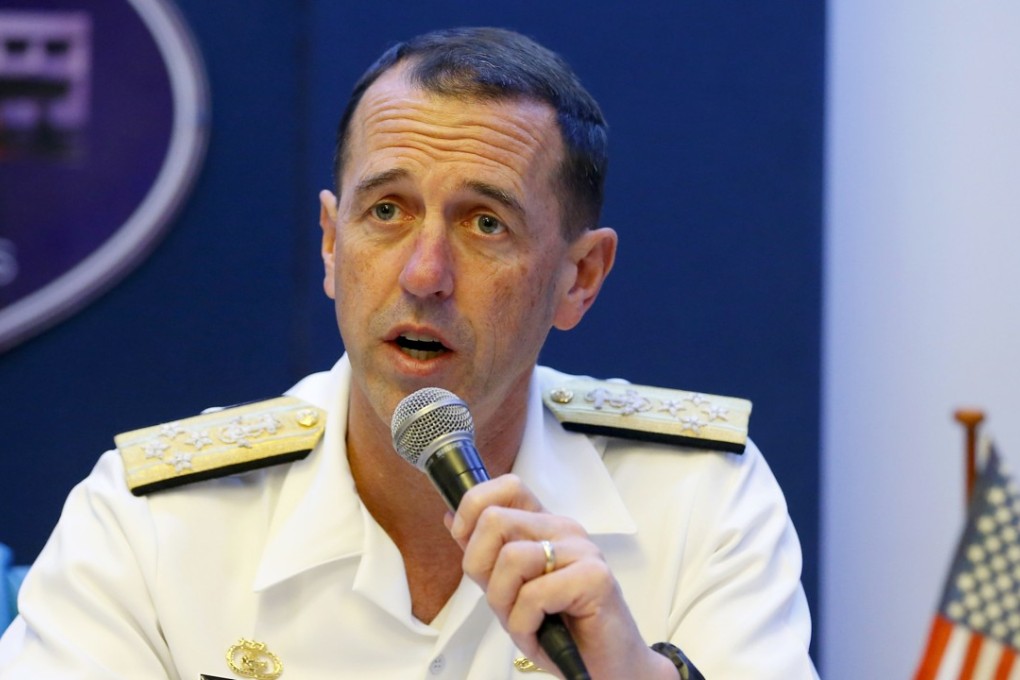China should stick to code of conduct at sea: US Navy chief
- Admiral John Richardson says doing so would reduce the chances of an incident should the US and Chinese navies meet
- His four-country tour of the Indo-Pacific is seen as a bid by the US to reassure its partners that is a stabilising power

Last month, the Chinese missile destroyer Luoyang almost collided with the US warship USS Decatur near disputed islands in the South China Sea. The US described the move by the Chinese destroyer as unsafe, while the Chinese defence ministry said the Decatur had been warned off after venturing into Chinese waters.
China and several Southeast Asian nations have conflicting territorial claims on the South China Sea. While not a claimant in the waterway, the US has repeatedly said it must patrol the waters to maintain freedom of navigation and the peaceful resolution of disputes under international maritime law.
China views the US’ freedom of navigation activities as an encroachment by an outside power on its territorial waters and a threat to its sovereignty and security. In a statement earlier this month, China’s defence ministry said it would take all steps necessary to protect its sovereignty.
“We steam in the same waters as the Chinese Navy in the South China Sea, and encounters happen frequently. The vast majority are conducted in accordance with the Code for Unplanned Encounters at Sea. Rarely, there is a departure from that – for example, Chinese ship behaviour with respect to the USS Decatur,” Richardson said in a press briefing by telephone from Canberra.

“We advocate for a return and consistent adherence to the Code, to minimise the chance for a miscalculation that could lead to a local incident or potential escalation,” he said.
Richardson has visited Indonesia, the Philippines, and Australia, and is heading to New Zealand tomorrow. His tour comes in the wake of the first joint maritime exercise between China and Asean that concluded last week.